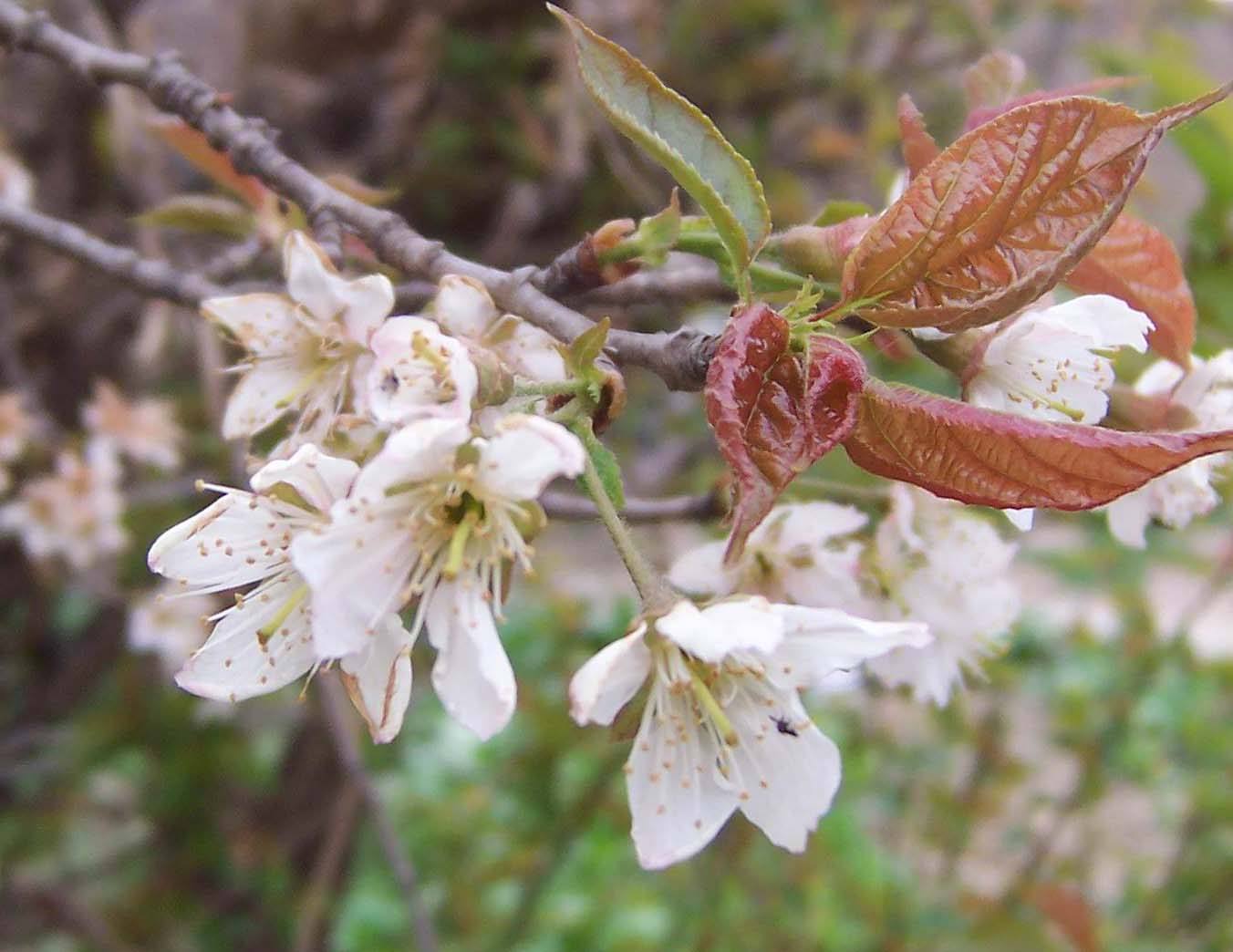Prunus prostrata seed
Rosaceae: a hardy alpine shrub that can reach 1m. Found on the rocky slopes, naturally above about 2000m. up to as high as 4000m. The flowers are solitary or in pairs, and are an unusual light rose colour, blooming from April–May. The fruit is red, ovate, with thin flesh, ripening in July. The leaves are ovate, with serrate margins. The bark is reddish brown. Native to Israel, Algeria, Morocco, Tunisia, Syria, Turkey, Albania, Greece, including Crete, Italy, Sardinia, Croatia, France, Corsica, Spain, the Caucasus, Iran, Kashmir and Afghanistan.
USES:
The fruit can be eaten raw or cooked, but are said not to be very palatable. The plant’s main use is as in ornamental gardening. It makes an interesting, rare and unusual addition to the rock garden. It could an interesting Bonsai subject.
GROWING INFORMATION:
Mountain Cherry seeds have a deep dormancy within them, this requires a degree of patience to overcome and it is usually quite easy to get high levels of germination if the correct procedures are followed.
First prepare a free draining substrate into which the seeds are to be mixed, this can be a 50/50 mixture of compost and sharp sand, or perlite, vermiculite. The chosen substrate needs to be moist (but not wet), if you can squeeze water out of it with your hand it is too wet and your seeds may drown and die. Mix the seeds into the substrate, making sure that there is enough volume of material to keep the seeds separated.
Place the seed mixture into a clear plastic bag (freezer bags, especially zip-lock bags are very useful for this -provided a little gap is left in the seal for air exchange) If it is not a zip-lock type bag it needs to be loosely tied. Then write the date on the bag so that you know when the pre-treatment was started.
The seeds first require a period of warm pre-treatment and need to be kept in temperatures of 20˚C for a period of 2-3 weeks. During this time make sure that the pre-treatment medium does not dry out at any stage or it will be ineffective!
Next the seeds require a cold period to break the final part of the dormancy, this is easily achieved by placing the bag in the fridge at (4˚C) for approx. 18 weeks. It is quite possible for the seeds to germinate in the bag at these temperatures when they are ready to do so, if they do, just remove them from the bag and carefully plant them up.
When the period of pre-treatment has finished, the seed should be ready to be planted. Small quantities can be sown in pots or seed trays filled with a good quality compost and cover them with a thin layer of compost no more than 1cm deep. For larger quantities, it is easiest to sow the seeds in a well-prepared seedbed outdoors once the warm and cold pre-treatments have finished and wait for the seedlings to appear.
It has also been found that fluctuating pre-treatment temperatures can give the best germination results and I have myself had excellent results by keeping the mixed seeds in a cold shed through the winter for the cold stage of their pre-treatment and allowing the temperature to fluctuate naturally. Un-germinated seeds can have the whole warm and cold process repeated to enable more seeds to germinate. Fresh seedlings can keep germinating for several years after the original sowing date.
Do not expose newly sown seeds to high temperatures (above 25˚C). Keep the seedlings well-watered and weed free. Growth in the first year is usually between 20-50cm depending on the time of germination and cultural techniques and developing seedlings are usually trouble free. Allow them to grow for 1-2 years before planting them in a permanent position.
Requires a well-drained moisture retentive soil. Thrives in a loamy soil, doing well on limestone. Requires a very sunny position. The plants dislike strong winds often dying back when growing in exposed positions. Plants normally Flower profusely in British gardens. Grows well in the rock garden.

